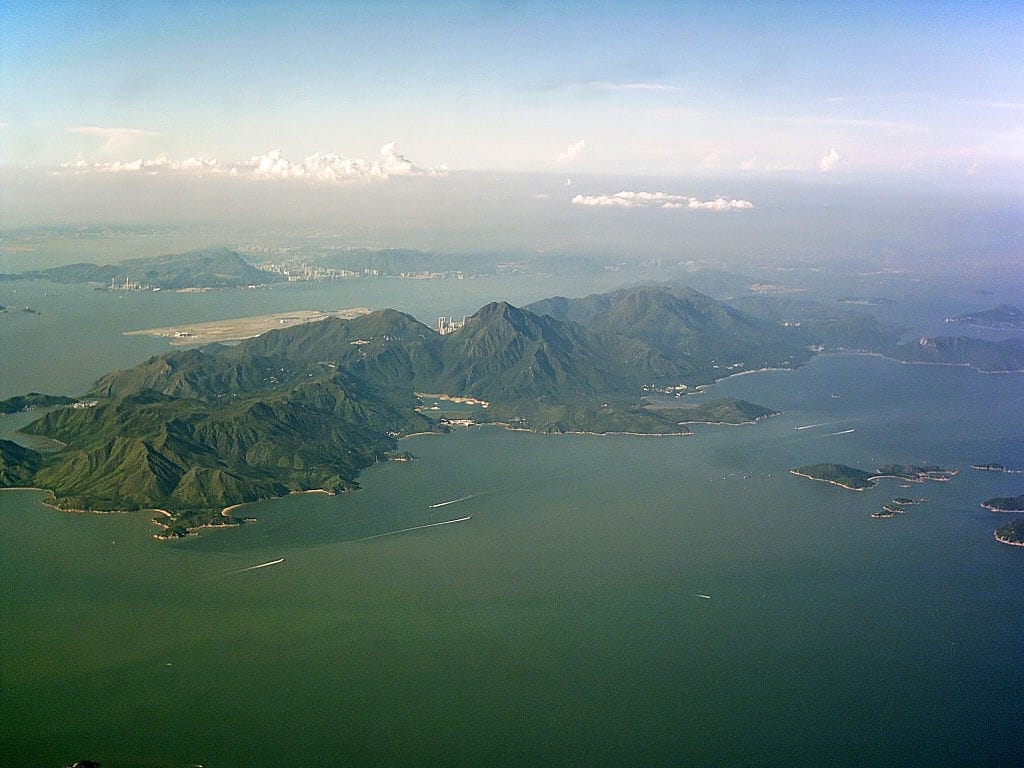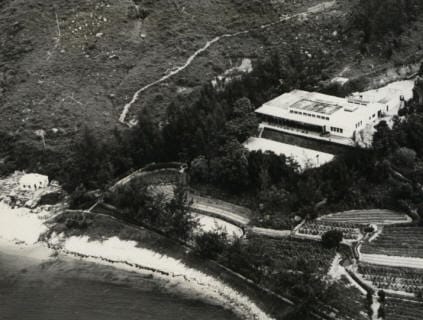Lantau Island's history and the best spots to visit today
As Hong Kong's largest island, Lantau Island boasts an array of attractions that draw visitors from far and wide.

A few minutes every morning is all you need.
Stay up to date on the world's Headlines and Human Stories. It's fun, it's factual, it's fluff-free.
As the largest island in Hong Kong, Lantau Island boasts an array of attractions that draw visitors from far and wide. From the majestic Po Lin Monastery, a symbol of spiritual enlightenment, to the lush hiking trails and serene beaches like Pui O, Lantau Island is a haven for those seeking respite from the urban hustle. With its charming fishing villages, such as Tai O, that offer a glimpse into traditional Hong Kong life, or modern developments, such as Tung Chung, offering a charming blend of old and new, this island has a rich history waiting to be explored. So, read on to find out more about the area's past and the best spots to visit on Lantau Island.
Early Lantau Island

Nestled near the mouth of the Pearl River, Lantau Island holds a storied past that stretches back to prehistoric times. There's archaeological evidence of human habitation on the island since the Neolithic era, indicating its early role in navigation, trade and defense in the region. By the 12th century, strategic forts like the one in Tung Chung were built to combat smuggling activities, highlighting the island's significance in maritime affairs. In the 13th century, Lantau became a refuge for Emperor Duānzōng during the Southern Song Dynasty, adding another significant chapter to its historical narrative.
There are also remnants of Portuguese trading camps established on Lantau's shores, proof of its bustling trade routes. But, conflicts like the Sino-Portuguese wars led to their eventual abandonment by the 16th century. Amid these historical events, landmarks like the Hau Wong Temple, built in 1699 to honor Yeung Leung-jit, offer glimpses into the island's cultural heritage.
Lantau's early trade trails
In the history books, Lantau Island stands as a testament to the early interactions between Europe and Asia. During the 1510s, Portuguese traders established trading camps on Lantau, with strategic bases in Tai O village and Tuen Mun. These settlements played an important role in the trade routes of the Pearl River area. However, the tides turned against them during the Sino-Portuguese wars of 1521 and 1522, leading to the abandonment of these pioneering outposts. Despite their short-lived presence, the legacy of these Portuguese traders echoes through the centuries, marking a significant chapter in Lantau Island's rich history.
Tung Chung during the Imperial Era
Set against Lantau Island's maritime history, Tung Chung is a crucial player in the story. In the 19th century, piracy, led by figures like Cheung Po Tsai, surged, challenging imperial control. However, the imperial navy intervened, reclaiming authority and fortifying strategic locations like Tung Chung fort, built in the 12th century to combat smuggling. Over time, it became a symbol of imperial authority, listed as a historical monument in 1979. So, Tung Chung's significance intertwines with Lantau Island's narrative, reflecting its evolution from a pirate haven to an imperial stronghold.
Modern developments
Lantau Island is Hong Kong's largest island. Nestled west of Hong Kong Island and the Kowloon Peninsula, it forms part of the New Territories region. Administratively, the majority of Lantau Island falls under the Islands District of Hong Kong, with a smaller northeastern portion falling within the Tsuen Wan District.
Originally a cluster of fishing villages, Lantau Island underwent a lot of development in the late 20th century, especially with the establishment of Tung Chung New Town along its northwestern coastline. This period also saw the completion of several major infrastructure projects that reshaped the island's landscape. These include the Lantau Link in 1997, the Hong Kong International Airport in 1998, Hong Kong Disneyland in 2005 and Ngong Ping 360 in 2006.
Lantau Island today
In terms of geography, Lantau Island spans a landmass of 147.16 square kilometers (56.82 square miles), making it nearly twice the size of Hong Kong Island. Characterized by mountainous terrain, the island is crowned by Lantau Peak, standing tall at 934 meters (3,064 feet), the second-highest point in Hong Kong after Tai Mo Shan. Notable peaks such as Sunset Peak, Lin Fa Shan, Nei Lak Shan and Yi Tung Shan contribute to the island's rugged beauty.
Often hailed as "the lungs of Hong Kong," Lantau Island is renowned for its green landscapes, forests and sparse high-rise residential developments, a contrast to the urbanized skylines of Hong Kong Island and Kowloon. The island is home to the largest country park in Hong Kong, Lantau South Country Park, along with two other parks, namely Lantau North Country Park and its extension. Today, these parks encompass over half of Lantau Island's total area, preserving its natural beauty for generations to come.
Must-visit spots on Lantau Island
Po Lin Monastery
Nestled amid Lantau Island's lush greenery, Po Lin Monastery is a tranquil oasis, complete with an impressive 34-meter bronze Buddha statue nearby known as the Big Buddha. Founded over a century ago by wandering monks, this site is full of history and spirituality. Inside, intricate Buddhist artwork, including three bronze Buddhas representing past, present and future, adorns the halls. After soaking in the serenity, refuel at the vegetarian restaurant before continuing your exploration.
Quick facts
- Where – Ngong Ping Plateau, Lantau Island
- When – Monday to Sunday, 9 a.m. - 6 p.m.
- Phone – +852 2985 5248
- Website
- More Information
Lantau Trail
Your Lantau Island adventure wouldn’t be complete without checking out the Lantau Trail from Tung Chung to Tai O, a 16-kilometer route with breathtaking ocean vistas and the exciting possibility of spotting Hong Kong's pink dolphins. Start your adventure with a short walk from the MTR towards Yat Tung in Tung Chung, and then follow the trail to the quaint village of Tai O. Known as the "Venice of Hong Kong," Tai O offers a glimpse into the region's rich history, from Portuguese and British colonial influences to Chinese immigration. Level up your trek game by arranging a boat ride with local residents to explore the town further and perhaps catch a glimpse of the unique pink dolphins.
Quick facts
- Starting Point – Mui Wo, Lantau Island
- Distance – 67 kilometers
- Elevation – 4,057 meters
- Phone – +852 6291 8429
Cheung Sha Beach
Cheung Sha Beach, where white sands meet clear waters, is a tranquil oasis on Lantau Island. Split into Upper and Lower sections, it's easy to get there from Hong Kong Island via the Mui Wo ferry from Central. Once you arrive, head to Lower Cheung Sha Beach for a day of sun and fun. Fuel up at beachfront restaurants before lounging on the sand or trying out water sports like kayaking and surfing. Keep an eye out for Lantau's water buffaloes strolling along the shore as the sun sets on your beach day adventure.
Quick facts
- Where – 29 Lower Cheung Sha Village, Lantau Island, Sai Kung
Pui O Beach
Pui O Beach, Lantau Island's hidden gem nestled at the foot of lush hills, offers a slice of tranquility away from the city bustle. It's the perfect spot to unwind on soft golden sands or enjoy a chilled beer as the sun dips below the horizon. While the beachside restaurant serves up typical local dishes, hop on a short bus ride to Mui Wo for a wider selection of dining options. And if you're up for an adventure, don't miss our guide on Pui O's best hiking trails.
Quick facts
- Where – Pui O Beach, Lantau Island
- Phone – +852 2984 1116




Comments ()